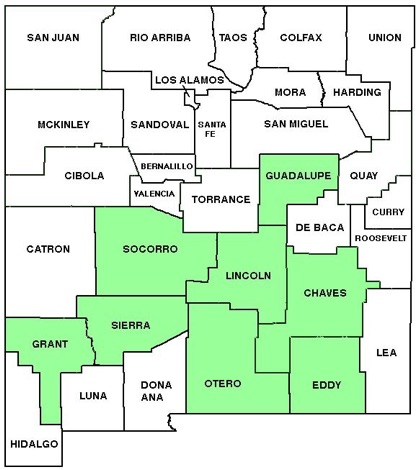WILDFLOWERS OF NEW MEXICO

This endangered wetland species can reach 8-feet tall with a single stem with numerous ascending upper branches tipped with flower heads with white to pinkish, tassel-like florets. Note the prominent light-colored ridges on the green, spine-tipped phyllaries at the base of the head, and the wings on the stem between the leaves.
FLOWER: August–October. A dense tassel-like cluster of tubular florets sits atop an egg-shaped head covered with rows of green, lance-shaped phyllaries, each with a white central ridge and tipped with a spine-like tip.
LEAVES: Basal and alternate or crowded on stem, smaller upward. Blades oblong to elliptic, 4–24-inches long (10–60 cm); margins with irregular teeth, or deeply lobed, with small spines 1/8-inch long (3 mm); surfaces hairless or thinly covered with cobwebby hair; leaf bases grow down the stem between leaves creating a winged stem.
HABITAT: Moist sandy, gravelly soils, streamsides, springs, wet meadows; pinyon-juniper, ponderosa-Douglas fir forests.
ELEVATION: 3,200–7,900 feet.
RANGE: AZ, NM, TX.
SIMILAR SPECIES: 12 native species of thistles in NM, 5 in 3 or less counties, and two introduced. The tall, winged stems and wetland habitat distinguish this species. Populations west of the Pecos River tend to have white to pinkish flowers and those along the river have purplish flowers.
NM COUNTIES: South-central NM in low-to mid-elevation, moist habitats: Chaves, Eddy, Grant, Guadalupe, Lincoln, Otero, Socorro.

WRIGHT’S MARSH THISTLE
CIRSIUM WRIGHTII
Aster Family, Asteraceae
Biennial herb



THE CONTENTS OF THIS WEBSITE ARE COPYRIGHTED AND CANNOT BE USED
WITHOUT PERMISSION OF GEORGE OXFORD MILLER


Range Map for
Cirsium wrightii
EMAIL ME